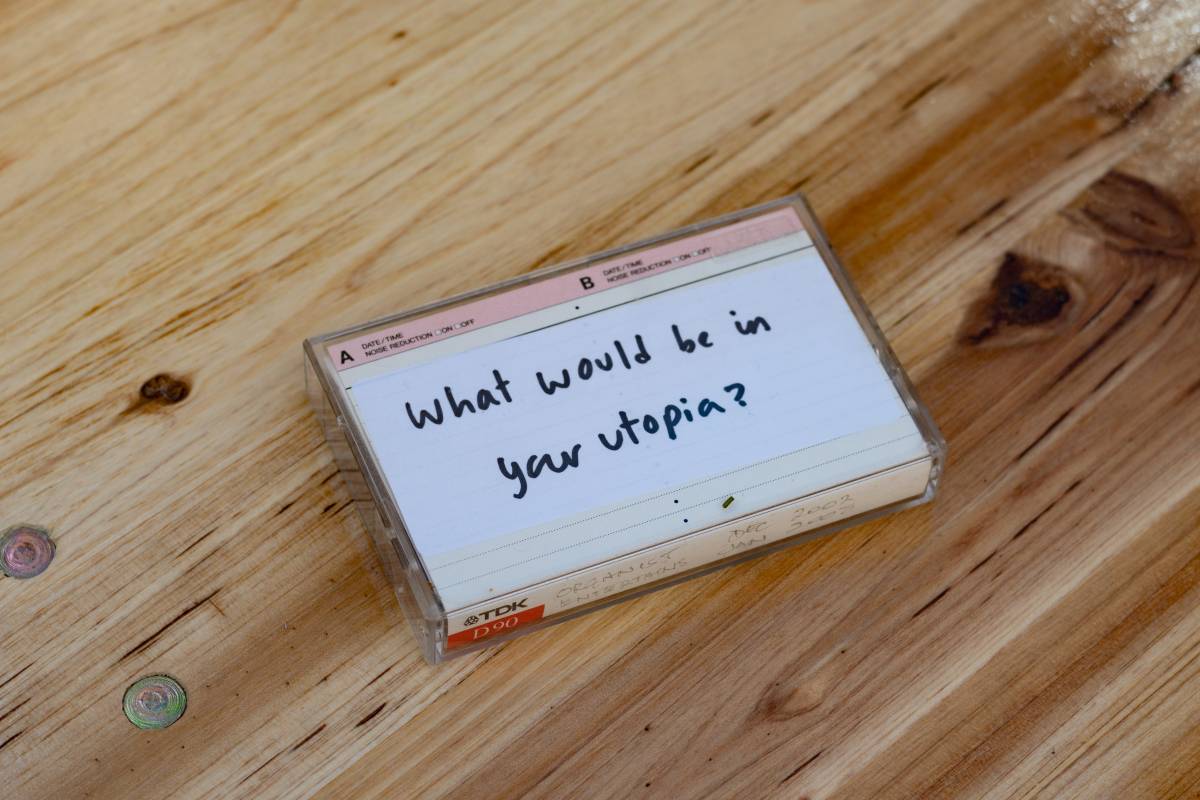Building, unbuilding, and every step in between: Reflections on the Art, Climate, Transition (ACT) Symposium by Haeweon Yi

Building and growing are two of the primary ways that humans have rapidly shaped our planet into what it is today. The bustling east side of London, home to Toynbee Studios where the ACT symposium was held is a testament to this. The rows of buildings and street trees that have endured the test of time are still living memories present in people’s daily lives. The ACT symposium is an international symposium exploring art, climate change and social transition, as part of What Shall We Build Here festival. This question of the festival title is accompanied by what Zoë Laureen Palmer’s work asks, ‘What Shall We Grow Here?’ Her green mosses in the Artsadmin Canteen greeted us with their tender appearance, remaining silent, yet withholding any answers. At a time when building, making, and growing no longer solves all of humanity’s problems, and when we can’t help but think about our impact on the planet, what does it mean for us artists to create? The questions resonated throughout the symposium, celebrating the imagination and creativity of those who persisted ‘in spite of’.

The People’s Palace of Possibility is such a place. People’s old tents were given a new life, creating a cosy urban refuge, inviting us to share stories of people who imagined a utopia. However, (spoiler alert!) what sparked a moment of transition was their ‘failure’ to build a utopia. It was in those little cracks of failure, fear, and desire to run away that the imagination was able to penetrate. This is like how fungi must undergo the process of decomposition to form mushrooms.
My workshop ‘A Fairy Ring for Human-Fungi’ on the first day of the symposium shared my poetic and bodily exploration of decomposition and the mycelial network we all are in. At the symposium, I encountered another question from mushrooms as one of ‘Environmental Justice Questions’, moderated by Harun Morrison with Maymana Arefin: What can fungi teach us about caring better for ourselves and for each other? While listening to other people’s journeys and memories, I felt the image of the mycelium I had created with the participants the previous day slowly expand.

Another pack of cards was spread out in a different room by Henry Mulhall for a game of ‘Cards On The Table’ to discuss degrowth. Degrowth suggests another way of ‘building’ by striving to disentangle success from financial indicators. The game is structured in such a way that the words of the participants are collected, deconstructed, and reconnected, continually leading to the next conversation. The process of exploring the cyclical nature of unbuilding and building was also directly conveyed to our hands through the materiality of clay at Becky Lyon’s installation ‘The Enmessing Table’ in the Palace. From time to time, we must touch and play with clay as a reminder of the simple truth that both clay and our bodies ultimately return to the flesh of the earth in a cyclical movement. And sometimes, we also need to embark on long walks to become a landscape (‘I walked too long and I became a landscape’ by Tery Žeželj & Maria Magdalena Kozlowska), or dance with others in the park, regardless of who may or may not be watching, in order to nurture our connection to the ground (‘Land Connection Practices with Hiatus’).

The story Malaika Cunningham read out to conclude the symposium felt like a perfect pairing with Mathieu Négathe-Charles’ keynote speech, creating a beautiful combination for the beginning and end. From the realm where I envisioned myself in a postcolonial world, with Mathieu’s words enveloping me as I listened with closed eyes, I drifted to traverse the paths of every nonhuman entity I encountered during those two days, crossing their past and future journeys. At last, I reached the ‘here’ that the festival title had been questioning.

Perhaps the little magic of picking up a box full of cassette tapes one night with friends may never happen, but if we all lend an ear to the myriad voices on those imaginary tapes, if we make some room for the moss in the middle of the cafeteria, if we keep shuffling the cards for stories and discussions, if we share a landscape while moving together in the park, if we dare to sit in the dark to hear someone’s cry, we will find ourselves in the process of building, unbuilding, and every step in between to live together in a better way. And there must be many toasts to each other to get through it all, just like how we celebrated the end of the symposium with a glass of the fantastic symphony that Zoë and the plants created. Here’s my unspoken final toast to everyone who sat, walked, ate, and danced with me for two days.

The ACT Symposium was supported by ACT, within the Creative Europe programme of the European Union
